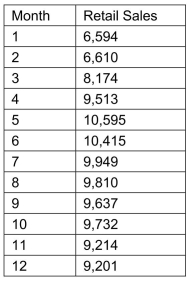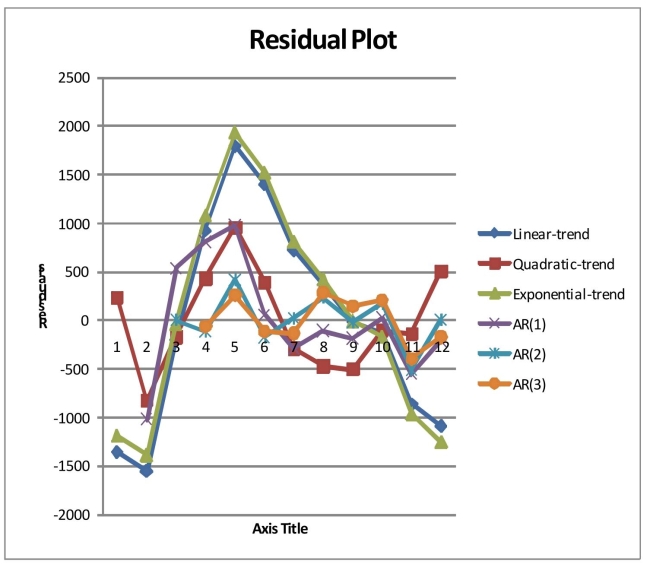SCENARIO 16-13 Given below is the monthly time series data for U.S.retail sales of building materials over a specific year.  The results of the linear trend, quadratic trend, exponential trend, first-order autoregressive, second-order autoregressive and third-order autoregressive model are presented below in which the coded month for the
The results of the linear trend, quadratic trend, exponential trend, first-order autoregressive, second-order autoregressive and third-order autoregressive model are presented below in which the coded month for the  month is 0:
month is 0:  Below is the residual plot of the various models:
Below is the residual plot of the various models: 
-Referring to Scenario 16-13, you can reject the null hypothesis for testing the appropriateness of the second-order autoregressive model at the 5% level of significance.
Definitions:
Domains Of Learning
The different categories of learning outcomes, usually classified as cognitive (knowledge), affective (attitudes), and psychomotor (skills).
Content Areas
Specific domains or subjects of focus within an academic field, professional practice, or any systematic study.
Psychological Contract Breach
Employee perceptions that his or her organization has failed to fulfill one or more of its promises or obligations in the psychological contract.
Recruiters Promise
The commitments or assurances given by recruiters to potential employees, often regarding job roles, conditions, or benefits.
Q10: Referring to Scenario 14-18, what is the
Q21: Referring to Scenario 16-13, what is the
Q28: Referring to Scenario 17-1, the sparklines enable
Q36: Referring to Scenario 19-2, what is the
Q60: Referring to Scenario 16-7, the fitted trend
Q128: Referring to Scenario 16-4, a centered 5-year
Q145: When a time series appears to be
Q148: Referring to Scenario 18-5, the residual mean
Q225: Referring to Scenario 18-8, the alternative hypothesis
Q317: Referring to Scenario 14-8, the value of